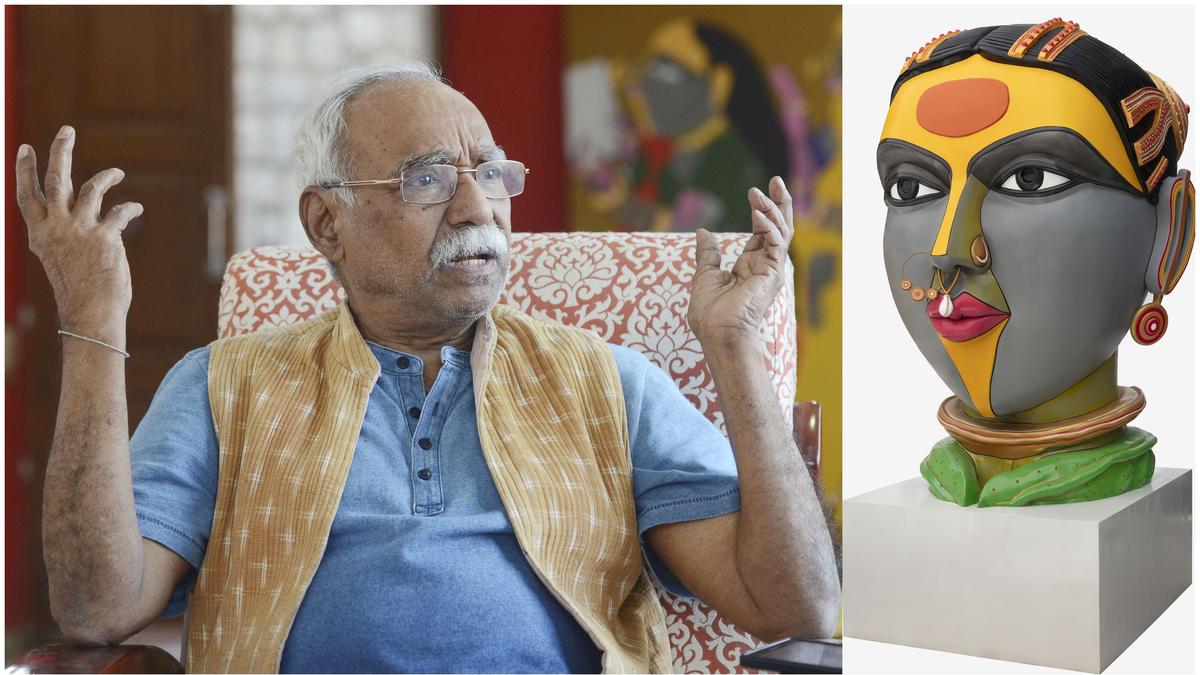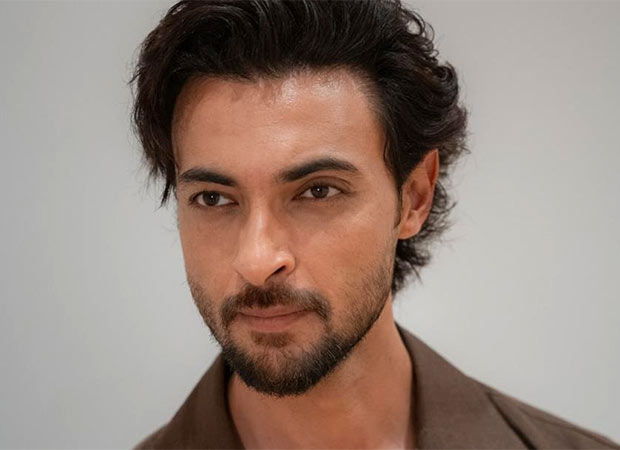What connects the domestic arrivals section at Hyderabad’s Rajiv Gandhi International Airport, the Hyderabad International Convention Centre (HICC), and the VIP lounge at Terminal 1 of Delhi Airport? All three feature a sculptural representation of a rustic Telangana woman by renowned artist Thota Vaikuntam.
Thota Vaikuntam with one of his sculptures at the Hyderabad airport
| Photo Credit:
Special arrangement
These eight-foot resinated fibreglass heads, painted with automotive colours by the artist burst with exuberance — a red bottu(bindi) on a turmeric-smeared forehead, ornate jewellery on the nose and ears, elaborate hairstyles, and kohl-rimmed eyes that radiate vibrancy. The master artist does not sculpt himself; instead, a team of artists at a Delhi workshop brings his drawings to life in three dimensions.

“The space transforms into a cultural hub with these painted heads adorned with traditional ornaments. Each exhibit has subtle variations but remains instantly recognisable as the iconic ‘Telangana woman’ created by Vaikuntam,” says the artist’s son, Raj Manohar Thota.

It is a quiet morning at Jayabheri Meadows, a gated community in Hyderabad. Dressed in a grey kurta and lungi, Vaikuntam sits on a rattan sofa, wearing a face mask. “My children ask me to be careful and wear a mask as a precaution. They say it’s for my well-being,” says the 83-year-old.
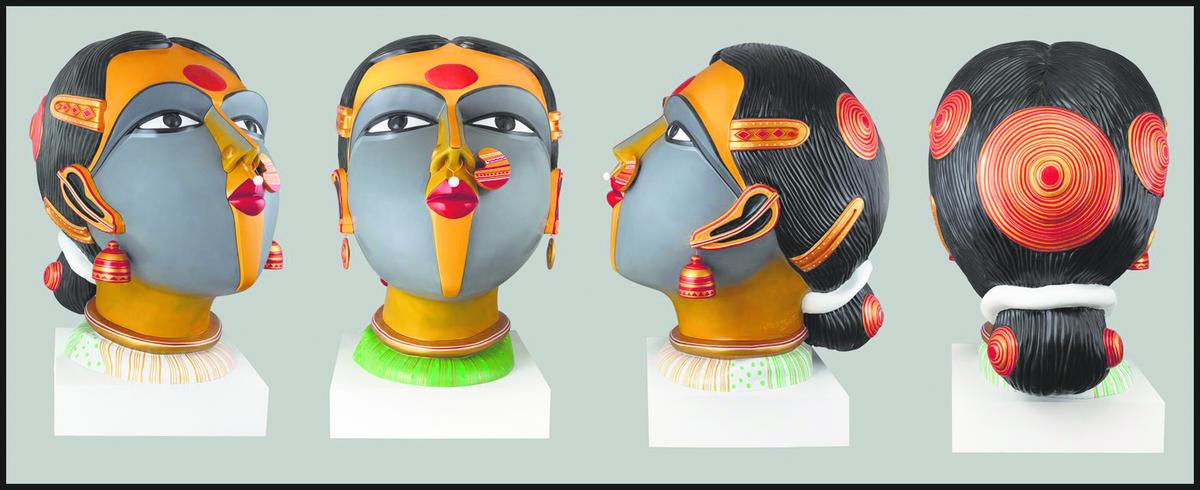
Some of the sculptures
| Photo Credit:
Special Arrangement
On a nearby table rest unfinished fibreglass sculptures — an eight-inch and a 12-inch Telangana man and woman. Pointing to them, Vaikuntam speaks of his central theme: the vivid portrayal of rural Telangana and its bustling life that has long defined his work. “I have never moved far from my people,” he says. “But there are also sculptures of Ganesha and the Dancing Shiva (Nataraja).”
Transition to sculptures
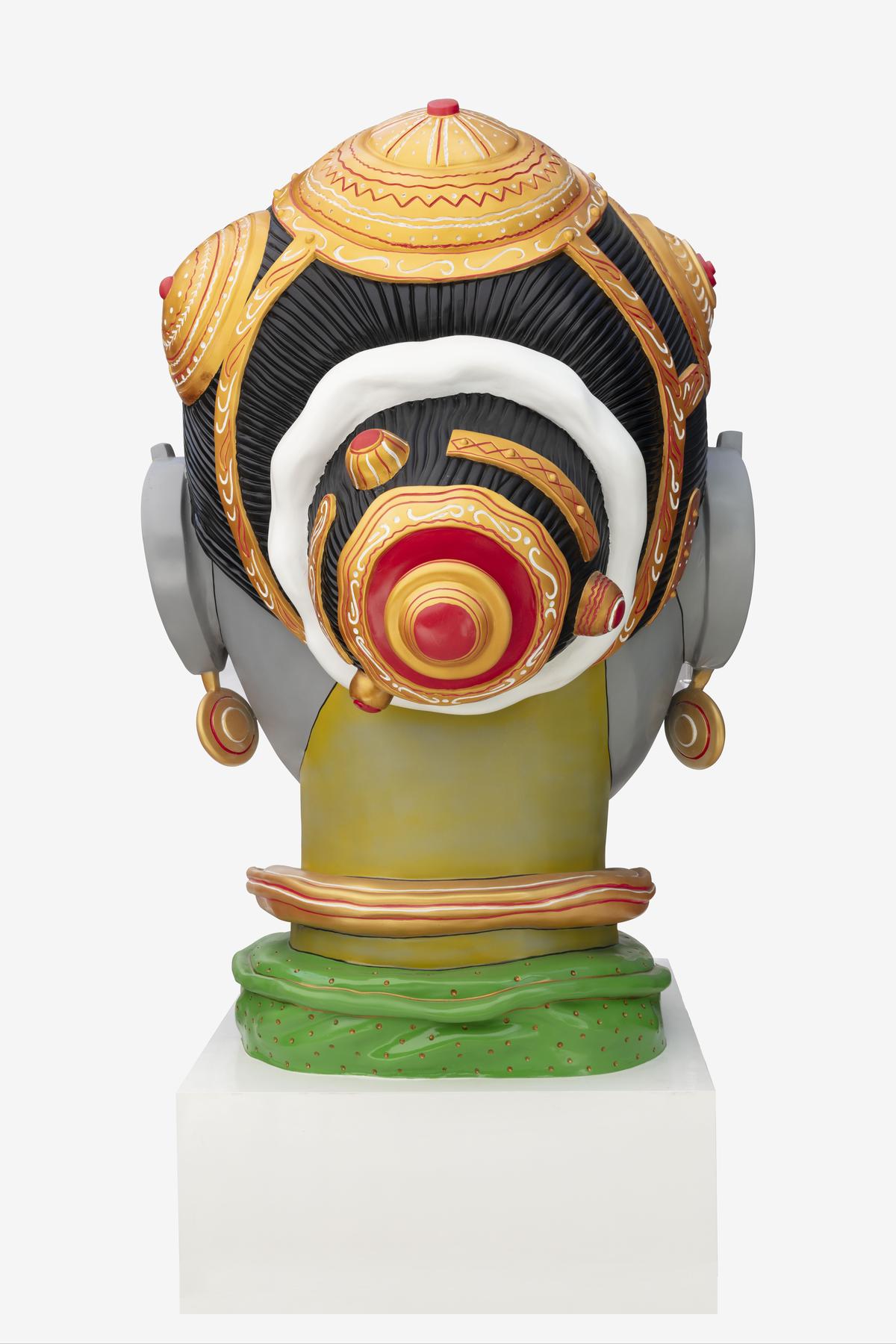
With a touch of tradition
| Photo Credit:
Special Arrangement
Vaikuntam’s signature paintings took a sculptural turn on a friend’s advice. Immersed in the creative process, he worked closely with sculptors who translated his two-dimensional figures into three-dimensional forms. “Sometimes, the team doesn’t understand the traditional elements in my drawings,” he says. “I explain — netti ki shikha untadi, mallepoolu pettukuntaaru (men keep a tuft of hair, and women wear jasmine flowers).”

This year marked a new chapter in his artistic journey, with public art displays showcasing his muse — the rustic Telangana woman, reimagined as a sculptural head. “It was again a friend who suggested focussing on just the head,” he recalls. “I agreed. You can only look at a full figurative statue for so long. The face, however, leaves a lasting impact. We always remember the face.”

The Padma Shri awardee often travels to Delhi to collaborate with the sculptors. “Art lovers look at the work and say, Yeh toh Vaikuntam ka head hai (This sculptural head is by Vaikuntam),” he laughs, his voice filled with childlike joy. Even as he embraces this new form of expression, his artistic voice has remained constant for over four decades. He has never felt repetitive with his chosen theme — instead, consistent practice has helped him refine nuances, carve his niche, and create a distinct identity. “Finding an identity in creative work isn’t easy. Adi adrushtam (It’s a virtue). I never imagined I’d find mine.”
Sculpture at Terminal 1 of Delhi Airport
| Photo Credit:
Special Arrangement
He admits this shift in perspective came to him late. “When my teacher K.G. Subramanyan once asked what my identity was, I didn’t know. I asked him how to find it,” he recalls. Subramanyan placed a flower pot on a table and told the class to observe it carefully. “He said, ‘Everyone will draw the same flower pot, but what makes your work different is your identity. Work hard to develop your own style — and once you find it, protect it.’”
Colours of rural Telangana
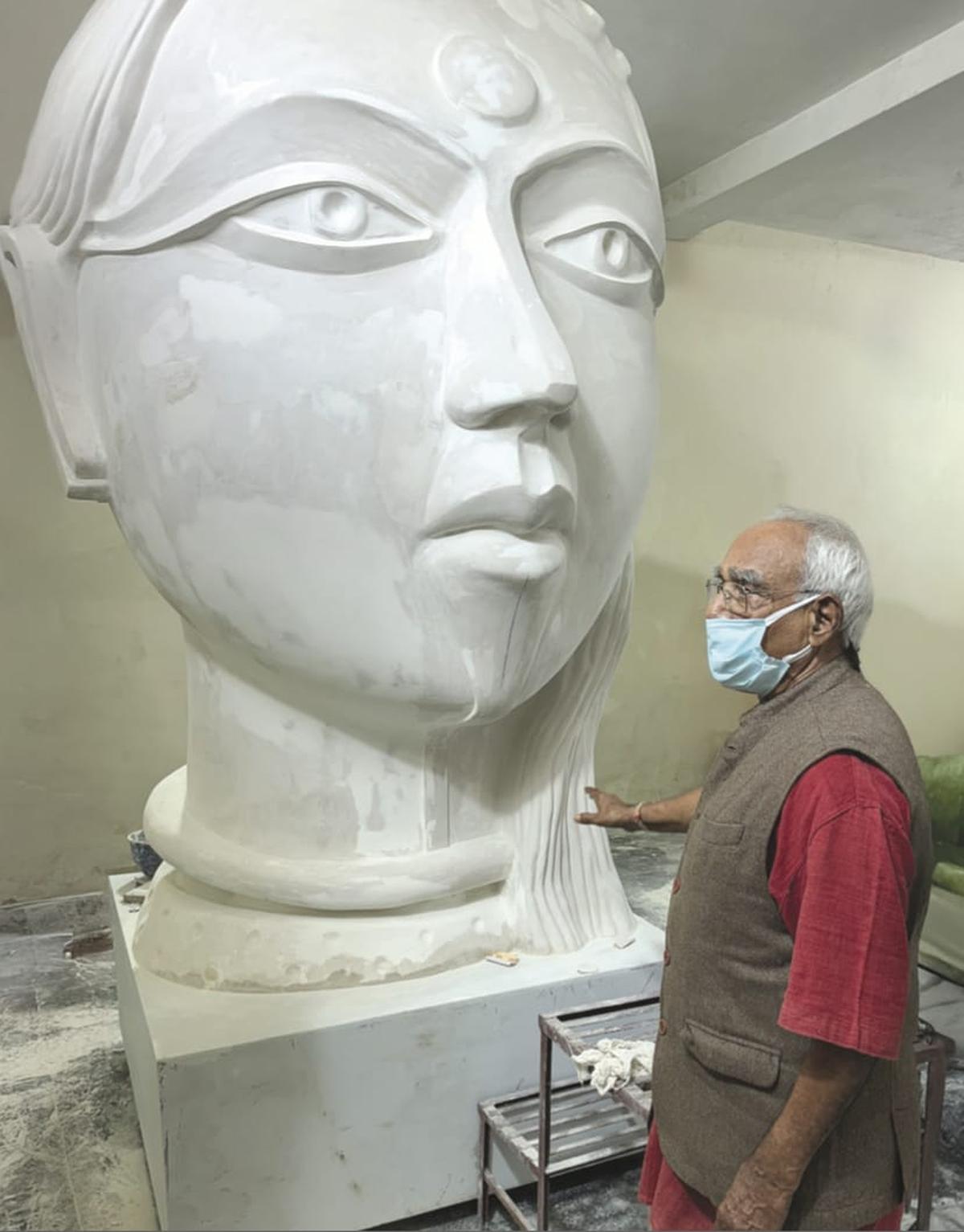
Thota Vaikuntam at a workshop
| Photo Credit:
Special Arrangement
Born in Boorugapalli, Karimnagar district, in Telangana (then undivided Andhra Pradesh), Vaikuntam found his identity in his village and its people. Through colour and form, he celebrated rural Telangana.
As the conversation turns to Hyderabad’s art scene, the octogenarian lights up when speaking of younger artists and their distinct styles. “In our time, selling art in Hyderabad was unthinkable. There were no curators — we started from scratch,” he says. He credits the late Surya Prakash, his contemporary and close friend, for catalysing the city’s art movement. “He organised exhibitions, camps, and workshops that brought momentum to art here. It’s sad he’s no longer with us.”
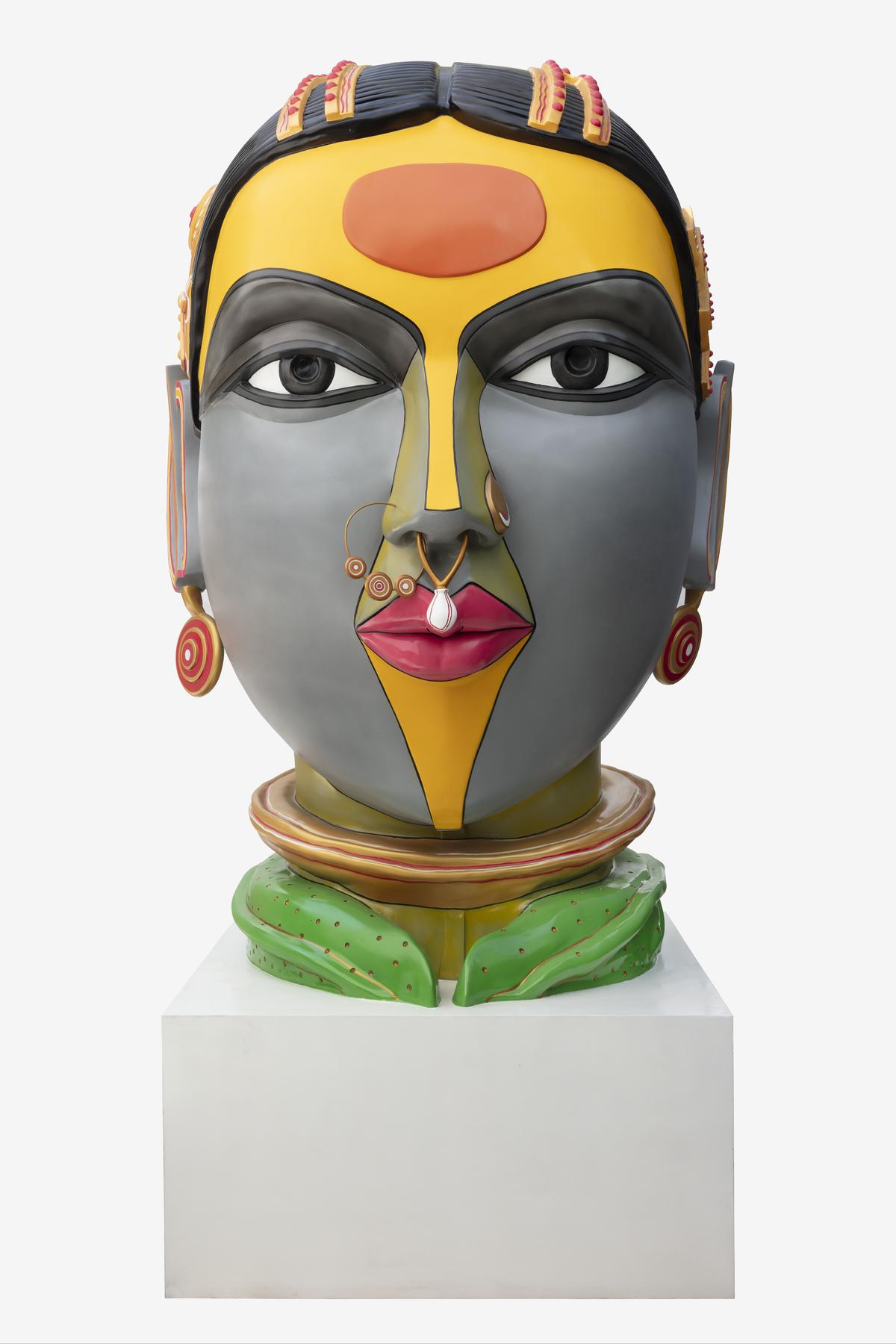
At Hyderabad airport
| Photo Credit:
Special Arrangement
In the mid-1980s, Vaikuntam juggled his roles as an artist and an art teacher at Jawahar Bal Bhavan, often working 12-hour days. “I was completely immersed in art. The first thing I did after waking up was draw, pack my food, and catch a bus. I never learnt to drive, but once my children were old enough to drive, they began taking me everywhere.”
Despite his legacy, he says he never pushed his children or grandchildren to follow in his footsteps. “They know art but haven’t made a career out of it, and I never pressured them. Today’s children have many paths — they can shine in whatever they choose,” he says with quiet contentment.
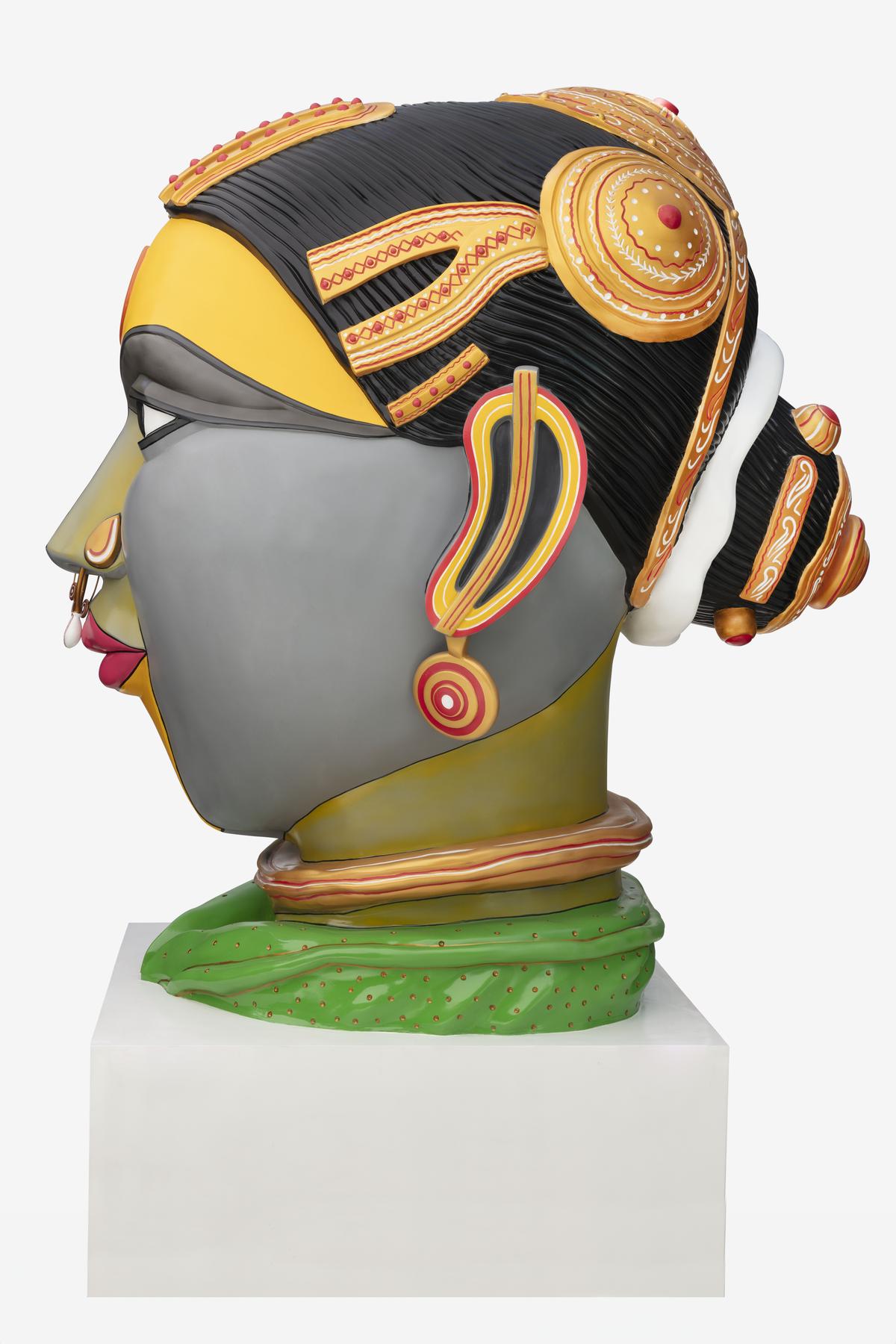
One of his sculptures
| Photo Credit:
Special Arrangement
Currently he is busy with his paper drawings. As he reflects on his journey, a sense of fulfilment colours his words. “All I wished for was that people in Hyderabad would know me, that my art would grace their homes. But now I’m known in Mumbai, Delhi, even abroad. The success came naturally — my love for art grew gradually. When former Prime Minister P.V. Narasimha Rao liberalised the economy in 1991, interest in art grew too. Those who once collected only artworks of MF Husain saab or SH Raza began looking at regional artists; it gave us a big push.”
Published – October 17, 2025 12:52 pm IST
